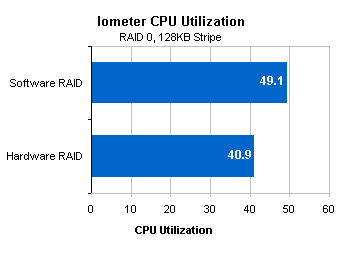Martin Sturm schrijft: "Naast een kleine restyle, heeft AnandTech vandaag een uitgebreide artikel geplaatst waarin een vijftal IDE-RAID controllers worden besproken en vergeleken. In het eerste stuk van het verhaaltje wordt er ingegaan op de mogelijkheden en voordelen van RAID in het algemeen. Er wordt een korte uitleg gegeven over RAID 0, 1 en 5. Vervolgens worden de besproken kaarten geïntroduceerd. De volgende IDE-RAID kaarten zijn bekeken; de AMI Megaraid 100, de Iwill SIDE RAID100, de Promise FastTrak100, de ADAPTEC AAA-UDMA en de Promise SuperTRAK100. De laatste twee zijn hardware RAID kaarten en geven dus een minder grote CPU belasting dan de overige kaarten. De review wordt vergezeld van een groot aantal benchmarks.
 |
Anandtech komt tot de conclusie, dat RAID 5 over het algemeen alleen bruikbaar is in combinatie met hardware-RAID oplossingen. In dat geval is volgens hem de Promise SuperTrak100 de beste keuze. RAID 0 en 1 zijn goed bruikbaar voor de thuisgebruiker, waarbij opgemerkt wordt dat je het beste nieuwe schijven van dezelfde grootte en snelheid kan gebruiken en je dan het beste voor de Iwill SIDE RAID100 of de MegaRAID 100 kunt gaan:
There is no question that a software RAID 0 IDE array will make your computer run faster, as the Content Creation Winstone 2001 scores clearly showed. Performance gains on the order of 13% are not negligible Just be sure that your software RAID chip is set to use its optimal stripe size, which we found in previous sections. The difference between a good stripe size for your card and a bad one can mean the difference between being faster than a single IDE drive or being slower than it.
Don't let the speed increase that comes with a RAID 0 array fool you into thinking that you can use older drives and get the same performance. The fact of the matter is that unless your IDE drives in the array are fast, the array simply won't perform well. The same can be said with mixing fast drives and slow drives: the performance of the array will go down.
For those not interested in speed, there are two solutions for you: RAID 1 and RAID 5. We found that mirroring, or RAID 1, provides a good way to maintain data integrity without a major loss of speed. Performance of our RAID 1 arrays were nearly identical to the performance of the single IDE drive we tested.
[...] Of the three software RAID cards tested, the Iwill SIDE RAID100 and its Highpoint HPT370A chip provided the best RAID 1 performance, offering a bit more speed than the competing chips. On the RAID 1 side, it was the MegaRAID 100 and the AMI MG80649 chip that resulted in the best array performance. Finally, when it came to hardware RAID 5, both cards performed similarly in real-world tests. We would recommend the Promise SuperTrak100 over the Adaptec AAA-UDMA for a few reasons, including the larger standard cache size and extra drive capabilities.
 |

:strip_exif()/i/991786184.jpg?f=thumbmedium)